The Employment Situation in June
Today’s jobs report shows that the economy added 372,000 jobs in June, for an average monthly gain of 375,000 over the past three months. The number of jobs added in June came in well above market expectations. Employment in April and May was revised down by 74,000 jobs.
The unemployment rate held steady at 3.6 percent. The labor force participation rate ticked down to 62.2 percent. Nominal wages have risen by 5.1 percent over the last year, a robust pace but the slowest pace since December 2021.
- Average monthly job growth over the last three months was 375,000, a fast pace, but a slowdown from the average in the winter.
Job growth in April, May, and June averaged 375,000 jobs per month (Figure 1). Since monthly numbers can be volatile and subject to revision, the Council of Economic Advisers prefers to focus on the three-month average rather than the data in a single month, as described in a prior CEA blog.
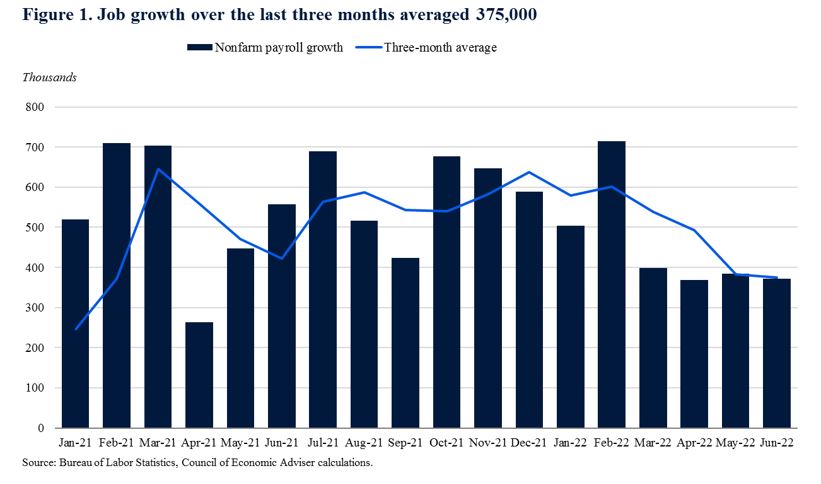
2. In June, private-sector employment fully recovered to its pre-pandemic level as did employment in manufacturing.
With the addition of 381,000 jobs in June, employment in the private sector has recovered to its pre-pandemic level. Employment in the manufacturing sector has also finally recovered to its pre-pandemic level.
As seen in Figure 2, some industries have not only fully recovered relative to pre-pandemic but have gone well beyond (e.g. transportation and warehousing). However, other industries are still struggling (e.g. leisure and hospitality and mining and logging).
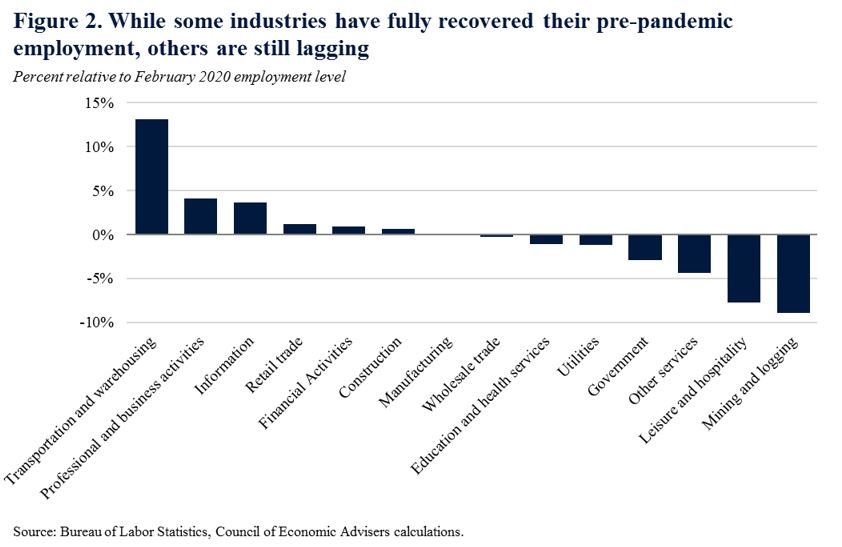
3. Monthly wage growth ticked down in June and has been trending downward.
Nominal average hourly earnings rose at a 3.8 percent annualized rate in June (0.3 percent at a monthly rate, down from 0.4 percent in May). While wage growth is still high relative to pre-pandemic, it is lower than at the end of 2021 (Figure 3). Adjusted for inflation, recent wage growth has been negative.

4. The headline unemployment rate held steady at 3.6 percent while the broadest measure of unemployment fell to a record low.
The headline unemployment rate has been at 3.6 percent for four months in a row – near the recent record low set before the pandemic. U-6, a broader measure of unemployment that includes those employed part-time who would like full-time hours and those out of the labor force who are ready to take a job, fell to 6.7 percent, reaching a series record low (Figure 4). The June decline in U-6 largely reflects a substantial decline in involuntary part-time employment (part-time for economic reasons).
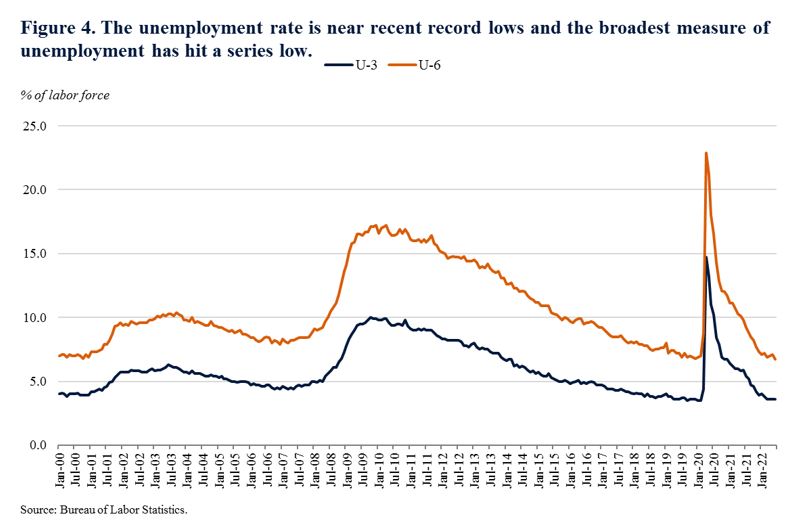
5. Labor force participation and the employment-population ratio declined in June and have been about the same rate for the last few months. However, over 12 months, those measures have seen increases, including for prime-age workers.
In June, the labor force participation rate ticked down for all workers and fell for prime-age workers (Figure 5a).
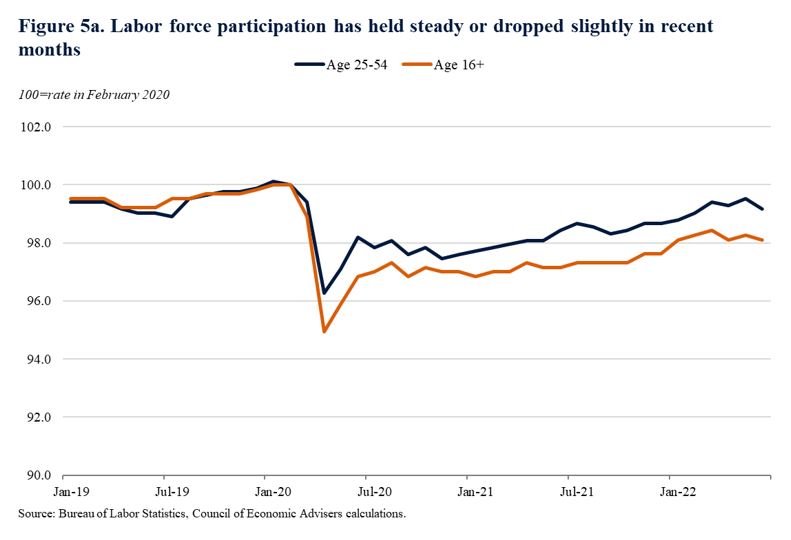
However, despite a stagnation in progress over the last few months, growth in labor force participation has been solid over the last 12 months, as seen in Figure 5b.
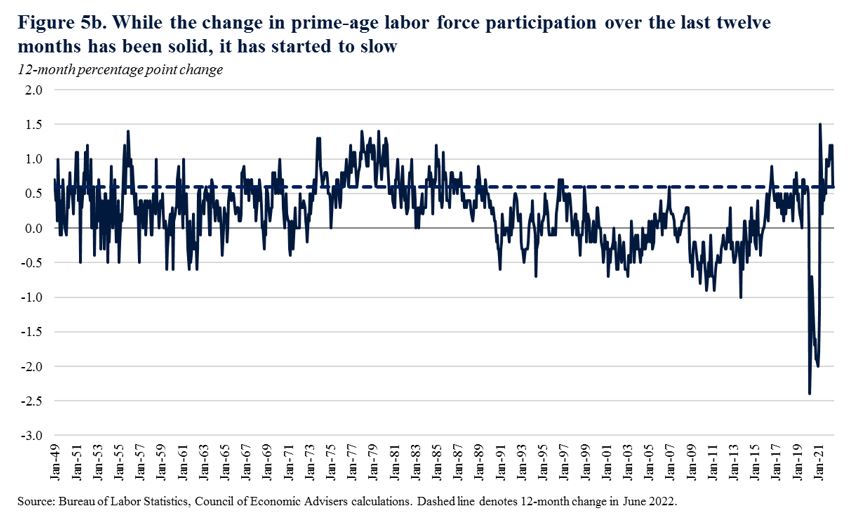
The employment-population ratio has also held steady or dropped slightly in recent months (Figure 5c). It fell by 0.2 percentage point for both all workers and for prime-age workers.
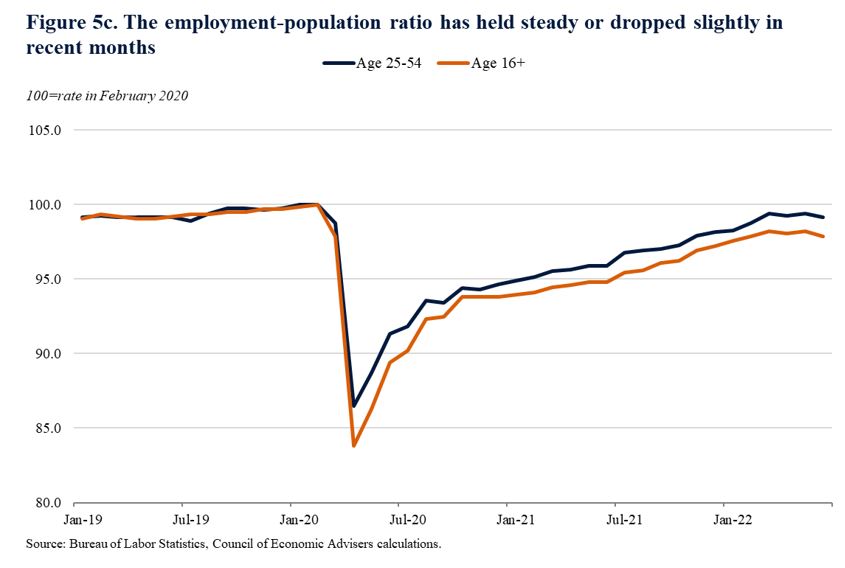
However, it has seen rapid growth over the last 12 months (Figure 5d). In fact, prior to the pandemic, there were only two months that saw faster 12-month growth in the prime-age employment-population ratio than the economy saw in June.
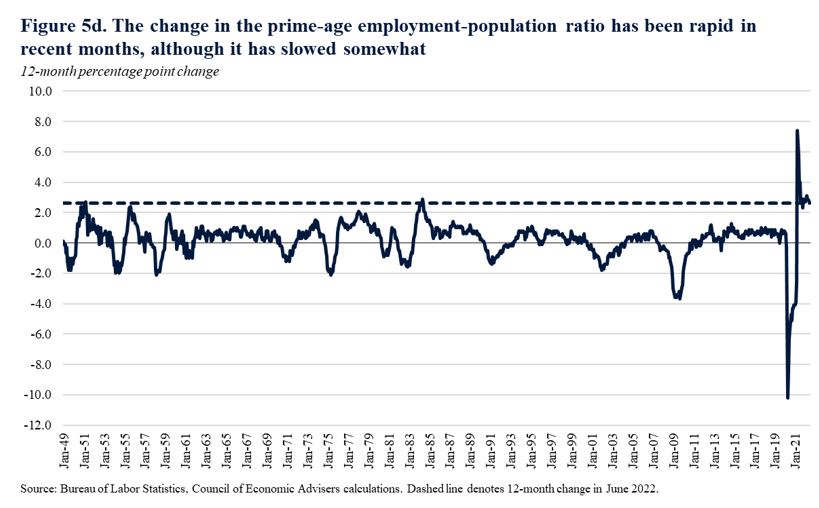
It is unclear why labor-force participation fell for prime-age workers in June. The size of the decline is on the larger side of usual monthly movements, but it may revert in coming months. The Council of Economic Advisers will continue to watch this measure in coming months for signs of longer-term labor market disruptions.
As the Administration stresses every month, the monthly employment and unemployment figures can be volatile, and payroll employment estimates can be subject to substantial revision. Therefore, it is important not to read too much into any one monthly report, and it is informative to consider each report in the context of other data as they become available.
